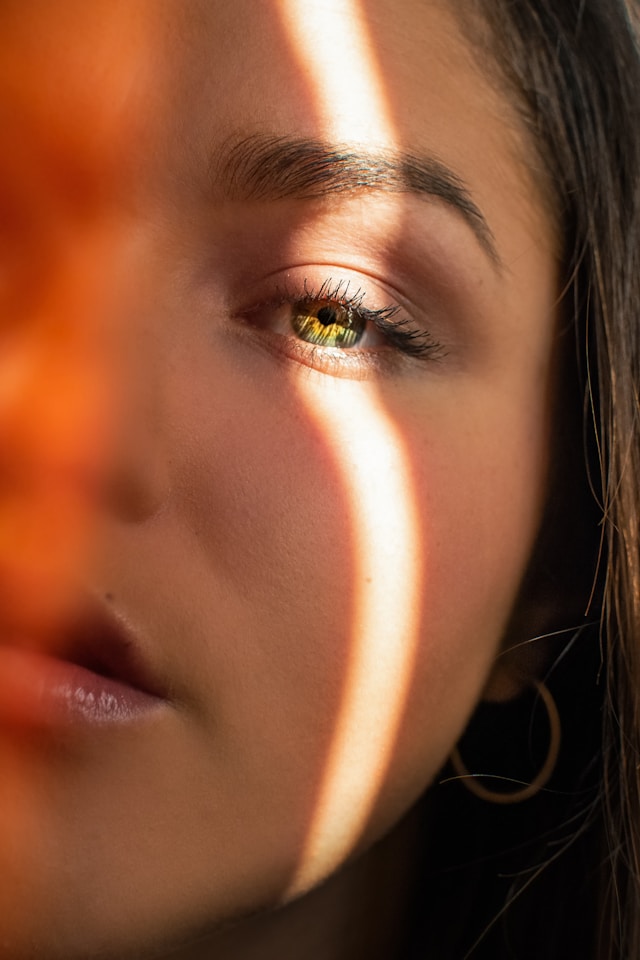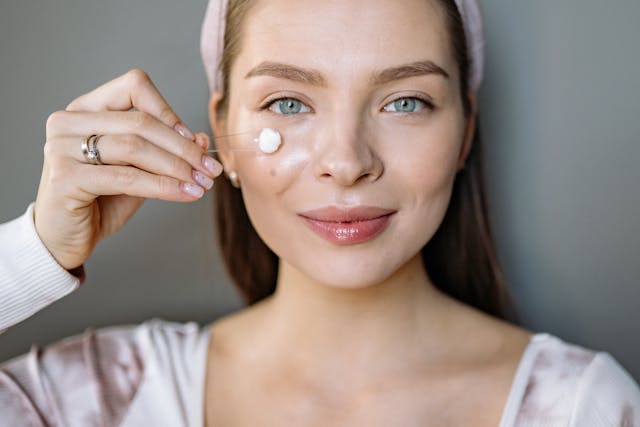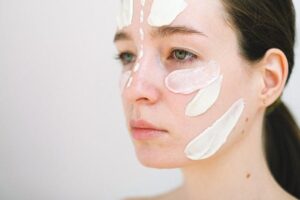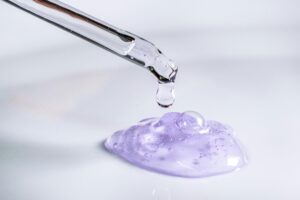Disclosure: I receive a small commission for purchases made via affiliate links.
Sunscreen is hands down the most important skincare product—and also one of the most debated. Since you need to reapply it regularly, it’s crucial to find the right one for your skin type and concerns. Do you need a chemical, mineral, or hybrid formula? Does your sunscreen have stabilizers, and why does that matter? How much should you apply, and how do you reapply over makeup without messing it up? This guide has everything you need to know to make sure you’re using SPF the right way.
Before we get into the details of sunscreen, let’s talk about why it’s so important. Sunscreen protects your skin from harmful UVA and UVB rays. UVA rays penetrate deep into the skin, causing premature aging, wrinkles, and dark spots, while UVB rays affect the surface, leading to sunburn. Over time, both can damage skin cells and increase the risk of skin cancer. That’s why sunscreen isn’t just another step in your skincare routine—it’s essential for protecting your skin long-term.
Types of sunscreen
There are three main types:
1. Mineral Sunscreen
Mineral sunscreens are physical sunscreens and after application, they just sit on top of your skin and create a barrier that reflects UV rays. They usually contain zinc oxide or titanium dioxide making them a great option for sensitive skin. The reason they are a solid choice for sensitive skin is mainly zinc oxide which has anti-inflammatory and soothing benefits. They start working almost immediately after application. The only downside is that they leave a white cast, especially on darker skin tones. If that’s a concern, I’d recommend trying Supergoop Unseen Mineral Sunscreen—it’s one of the few that won’t leave a chalky finish.
2. Chemical sunscreen
Chemical sunscreen, on the other hand absorbs into the skin and converts UV rays into heat and the heat is then released. That’s why I wouldn’t recommend it for someone with extra sensitive skin or rosacea. If you have rosacea and notice breakouts from chemical sunscreen, it might not be the best fit for you—I’d suggest switching to a mineral or hybrid sunscreen and seeing how that works instead.
Chemical sunscreens contain filters like avobenzone, oxybenzone, and homosalate. These formulas tend to be lightweight and don’t leave a white cast, making them a great choice for oily or combination skin. They also work well under makeup since they blend seamlessly. Unlike mineral sunscreens, which start working right away, chemical sunscreens need 15–30 minutes to fully absorb before you go outside. A lot of people don’t realize this and end up unprotected.
If your sunscreen contains avobenzone, keep in mind that it breaks down quickly in sunlight, losing effectiveness within a few hours unless stabilized. To ensure lasting protection from the sun, choose a broad-spectrum formula that includes stabilizers like octocrylene or Tinosorb to keep it photostable throughout the day.
I recommend using a sunscreen that doesn’t contain oxybenzone because it’s widely debated as a potential hormone disruptor and allergen. Many sunscreens now tend to be oxybenzone-free.
La Roche-Posay Anthelios Light Fluid Facial Sunscreen SPF 60 checks all those boxes. It contains 7% octocrylene, meaning it helps stabilize avobenzone from degrading too quickly in the sun, so you are getting reliable sun protection. It’s oxybenzone-free and is perfect for oily and combination skin, and if you’re getting acne from other famous sunscreens, I’d suggest giving it a try.

3. Hybrid Sunscreen
A hybrid sunscreen has both mineral and chemical UV filters—so you’ll see ingredients like zinc oxide or titanium dioxide alongside avobenzone or octocrylene. It’s the best of both worlds, giving you broad-spectrum protection with less white cast, a smoother application, and better wearability.
EltaMD UV Clear SPF 46 is a hybrid sunscreen that contains zinc oxide and octinoxate, making it a great option for rosacea-prone skin and anyone who wants the benefits of both mineral and chemical filters. Plus, the 9% zinc oxide helps calm irritation, which is a game-changer for sensitive skin, acne flare-ups, or other dermatological concerns.
How often should you apply and how much is enough?
You should apply sunscreen every morning. If it’s a chemical sunscreen, put it on 30 minutes before heading out. Reapply every two hours if you’re spending a lot of time outdoors because sunscreen breaks down with UV exposure, so you need to top it up for continuous protection. If you’re indoors with minimal sun exposure, reapply every four hours.
Sun rays can still get through windows, so being inside doesn’t mean you can skip reapplication. And if you’re like me—constantly glued to a screen—you should know that blue light from phones, laptops, and TVs can contribute to hyperpigmentation and skin aging. It’s not as intense as UV rays, but if that’s something you’re concerned about, reapplying every four hours max is a good idea.
Make sure to cover your face, neck, and hands—basically, anywhere that’s exposed. The two-finger rule is a great way to ensure you’re applying enough. You squeeze sunscreen along the length of two fingers (your index and middle finger) and use that amount to cover your face, ears, and neck. It helps ensure you’re applying enough sunscreen for proper protection because most people tend to use way too little. For your body, the general rule is about one shot glass (or two tablespoons) of sunscreen.
How to reapply sunscreen over makeup?
The easiest way to reapply sunscreen over makeup is with an SPF setting spray or powder, but keep in mind—they don’t offer the same level of protection as a traditional sunscreen, and the application can be uneven. Even if you plan to use an SPF spray or powder later, you should always apply a dedicated sunscreen underneath your makeup.
Personally, I think cream sunscreens are still the gold standard for reapplication, but let’s be real—they can mess up your makeup if not applied carefully. If you want to go that route, gently dabbing it on with a beauty sponge is your best bet.
Sunsticks are another option, but there’s a catch—your makeup will transfer onto the stick, which could make reapplication messy. If you prefer powders, Supergoop Mineral Powder SPF 35 is a solid choice. For mists, just make sure to spray generously and cover every area properly for even protection.
Final Verdict
At the end of the day, sunscreen isn’t just another step in your skincare routine—it’s not a chore; it’s a necessity. Whether you’re indoors or outdoors, rain or shine, cloudy or not, SPF is your best defense against premature aging, hyperpigmentation, and sun damage. And no, your foundation with SPF isn’t enough, and yes, you do need to reapply. Sunscreen is non-negotiable, and trust me—your future self will thank you for wearing it like a pro while you’re in your prime.
This post contains affiliate links. If you click through and support Modysch financially (at no extra cost to you), thank you so much! For more details, see the full Disclosure.
Maleeka is an orthodontic resident with a passion for skincare and beauty. She decodes beauty products, breaks down ingredients, and spills the tea on marketing hypes. When she’s not perfecting smiles or geeking out over the latest formulations and trends, you’ll find her binge-watching Netflix.





Pingback: Supergoop Unseen Sunscreen SPF 50 Review
Pingback: Tatcha Dewy Skin Cream Review: Is It Worth The Hype?
Pingback: Best Korean Skincare Routine For Acne Prone Skin